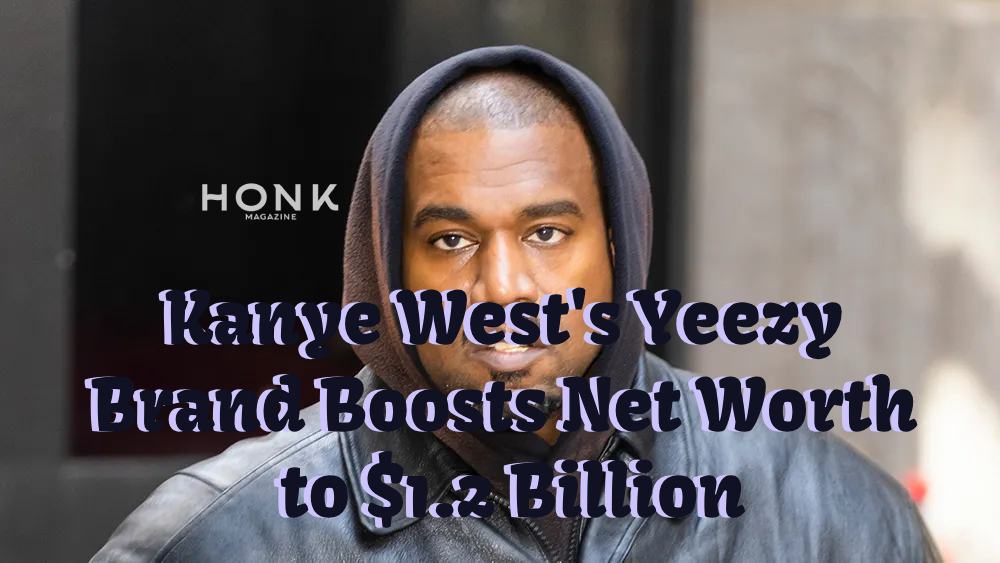Business
Challenges in Global Regulations for Natural Food Colors


A silent challenge echoes across the global stage—the maze of regulations. As the demand for healthier and naturally sourced alternatives rises, so does the need to understand and comply with a myriad of rules governing their application. Let’s unravel the complexities that manufacturers face in navigating the global regulatory landscape.
A World of Global Regulations
Natural food colors, sourced from fruits, vegetables, and other botanicals, present a palette of possibilities for creating vibrant and visually appealing products. However, this journey is intricately woven into a regulatory landscape that varies from one country to another. From the allowable ingredients to permissible usage levels, each nation contributes a thread to this regulatory fabric.
Harmonizing Standards: A Global Challenge
One significant challenge lies in harmonizing these diverse regulatory standards. What is deemed safe and acceptable in one region may encounter restrictions or require additional approvals elsewhere. Industry leaders like FoodRGB must delicately navigate this global framework, ensuring their products meet the rigorous standards set by each country they serve.
Europe’s Stringent Approach
In the European Union, the regulatory framework for natural food colors is notably stringent. The European Food Safety Authority (EFSA) meticulously evaluates and authorizes color additives, scrutinizing scientific data to ensure consumer safety. As a result, manufacturers must adhere to strict guidelines to gain approval for their natural color applications.
United States: A Balanced Equation
Across the Atlantic, the United States Food and Drug Administration (FDA) governs the use of natural food colors. While the FDA maintains a robust system for evaluating and approving these ingredients, there is a distinct balance between safety and innovation. Manufacturers often engage in a meticulous process of submitting petitions and scientific data to gain approval.
Asia-Pacific Dynamics
In the vast and diverse Asia-Pacific region, each country paints its canvas of regulations. From Japan’s detailed specifications to China’s evolving standards, manufacturers operating in this dynamic market must be agile and adaptable. The challenge is not only meeting existing regulations but staying ahead of changes and updates.
Benefits of Regulatory Compliance
While navigating global regulations poses challenges, the benefits of compliance are profound. Manufacturers that successfully meet regulatory standards gain the trust of consumers, retailers, and distributors. This trust is invaluable, contributing to brand reputation and consumer loyalty.
Industry Innovations: FoodRGB Leading the Way
Amidst the regulatory complexities, industry leaders like FoodRGB stand out. Their commitment to compliance is not just a legal requirement but a strategic decision to ensure the highest quality and safety standards. By investing in rigorous testing and documentation and staying informed about evolving regulations, FoodRGB pioneers a path that others in the industry can follow.
Educational Initiatives: Navigating the Maze
Understanding the regulatory maze is not just a task for manufacturers; it’s an educational journey for consumers, too. Industry players can play a pivotal role in simplifying complex regulatory information, fostering awareness, and helping consumers make informed choices about the products they purchase.
Conclusion: A Transparent Palette
Navigating global regulations is not just a challenge—it’s an opportunity for manufacturers to showcase their commitment to quality, safety, and consumer well-being. As consumers become more discerning, the ability to harmonize with global regulatory standards becomes a defining characteristic of industry leaders. The picture may be intricate, but with every compliant stroke, it becomes clearer, brighter, and more trustworthy.
Business
Kanye West’s Yeezy Brand Boosts Net Worth to $1.2 Billion

Kanye West, who now goes by Ye, is a well-known artist and entrepreneur who has recently reclaimed his status as a billionaire, with a net worth estimated at $1.2 billion. Much of his wealth comes from his music, but the biggest boost has come from his brand, Yeezy, which has changed the sneaker and fashion landscape. His journey from a famous rapper to a major player in the fashion world showcases his business talent and unique ability to connect with culture, allowing him to create a brand that holds significant financial value.
1. The Rise of Yeezy
Kanye started the Yeezy brand in 2009 through a partnership with Adidas. Over the years, it has become one of the most desirable and trendy sneaker and streetwear brands globally. What sets Yeezy apart is Kanye’s choice to take full ownership of the brand, allowing him to direct its creative vision completely. Unlike many other celebrities who collaborate with existing brands, he aimed to build something new that challenges the fashion industry’s norms.
Yeezy’s designs are noted for their simple yet modern look, and items like the Yeezy Boost 350, Yeezy 700, and Yeezy Foam Runner are now considered iconic. The brand’s success can be attributed to its scarcity, limited releases, and Kanye’s powerful presence on social media. These elements have helped Yeezy reach mainstream popularity, turning it into a symbol of luxury and style.
Check out this article: Kanye West Wants “Wizards Only” For His Yeezy AI Team
2. The Financial Growth of Yeezy
Kanye has achieved a net worth of $1.2 billion mainly because of Yeezy’s impressive profits. After teaming up with Adidas, Kanye struck a deal that allowed him to keep a large slice of the profits, a rare arrangement in celebrity collaborations. As Yeezy has thrived, so has Kanye’s wealth.
In recent years, Yeezy has been valued at around $3 billion, and Kanye is believed to own anywhere from 80% to 100% of the brand. His decision to end his partnership with Adidas solidified his control, ensuring that all profits from Yeezy’s sales go directly to him. The brand’s global popularity, high prices, and limited releases have helped Yeezy dominate the sneaker market and attract wealthy customers.
Yeezy’s shoe collection brings in hundreds of millions of dollars annually, and the clothing line, including oversized jackets and sweatshirts, adds even more value. Fans of the brand, including many celebrities, keep demand high for these stylish and premium-priced items. Yeezy’s success has caught the eye of not just fashion fans but also investors and market experts. Despite some controversies surrounding Kanye’s behavior, Yeezy has consistently generated large amounts of revenue, making it a key part of his wealth.
Check out this article: Kim Kardashian Reportedly Weighing Legal Action to Strip Kanye West of Joint Custody
3. Other Sources of Wealth
While Yeezy is the main contributor to Kanye’s fortune, it’s not his only source of income. His music catalog, which includes influential albums, also plays a significant role. He earns money through licensing deals, royalties from his music, and live performances, providing him with a steady income that complements his profits from Yeezy and other ventures.
Kanye has also invested in real estate and technology, adding to his financial portfolio. Other business projects, like his Donda brand and his earlier work with Gap, have contributed to his wealth, although they haven’t been as successful as Yeezy. His ventures into technology, particularly in artificial intelligence and digital media, could also provide substantial returns in the future.
4. The Power of Kanye’s Personal Brand
A vital aspect of Kanye West’s financial success is the strength of his brand. Known for his bold creativity, outspoken personality, and often controversial statements, he has created an image that resonates with many supporters and critics. This unique presence has only enhanced his cultural influence, making him an important figure in music and fashion.
Business
How to Get Your Music on Spotify’s Algorithmic Playlists

Hey there, music maker! Let’s chat about:
* The cool types of algorithmic playlists out there
* How Spotify’s playlist magic works
* Some nifty tricks to get your tunes on these playlists
* Ways to boost your chances of playlist success
* Some final thoughts to keep you inspired
Spotify’s Algorithmic Playlists: Your New Best Friend
Wondering how to get your music featured on Spotify’s playlists? No need to stress we’ve got you covered! Here’s the lowdown;
Option 1; Create a hit song that gains 5,000 to 10,000 streams, within the two weeks of its release. Sounds challenging? Keep reading!
Option 2; Consider using our Spotify advertising campaign to boost your streams and potentially catch the attention of those playlists.
Option 3: Use Spotify ad campaign to trigger the algorithm

Let’s dig in shall we?
Promoting your music on Spotify is like amplifying your voice in a room. Those algorithmic playlists? They’re like winning lottery tickets for artists helping them connect with listeners and even securing a spot, on Spotifys curated playlists. Stuff, right?
Think of these playlists as your music’s personal matchmaker. They introduce your tunes to listeners who might never have found you otherwise. It’s like having a friend who’s always saying, “Hey, you’ve got to hear this!”
Landing on a popular algorithmic playlist can give your Spotify profile a serious boost. And if you’re lucky enough to hit a trending playlist? Well, that’s when things can really take off!
What kinds of algorithmic playlists are out there?
Spotify’s algorithm is like a DJ that knows exactly what each listener wants to hear. Here are some of its greatest hits:
Discover Weekly:
Your personal Monday mixtape, filled with new tunes and old favorites.
Daily Mix:
A fresh playlist every day, blending your faves with similar tracks.
Release Radar:
Friday’s new music party, featuring your top artists and similar sounds.
Your Library:
A mix of your likes, saves, and new releases from your favorite artists.
On Repeat:
The songs you can’t stop playing, plus some new recommendations.
Repeat Rewind:
A blast from the past, featuring your old favorites and similar tracks.
Time Capsule;
Take a trip down memory lane personalized for you.
Spotify Radio;
Craft your playlist inspired by any song, artist or music genre.

Ever wondered how Spotify creates its playlists?
Think of Spotifys algorithm, as a music enthusiast robot with a memory. It observes listener preferences examines song details, adapts, to your listening patterns and notes how people engage with songs.Pretty smart, right?
So, how do you get your song on these playlists?
You’ve got two main routes:
Option 1: Create an amazing song that gets lots of love quickly. Aim for 5,000-10,000 streams in the first couple of weeks. Remember, Spotify also looks at things like user engagement and how well your song fits different playlists.
Option 2: Give our Spotify ad campaign a try. It’s designed to boost your streams and often triggers those algorithmic playlists. Plus, the benefits often continue even after the campaign ends!
Option 3: Use a Spotify ad campaign to trigger Spotify’s algorithmic playlists.
Here are some tips to boost your chances:
- Use Spotify for Artists: It’s like your backstage pass. Fill out all the info you can when submitting your music.
- Creating music is essential. It’s a no brainer!
- Share your music; Put your songs on playlists made by users reach out to curators and promote your tracks on media platforms.
- Create your own playlists: Mix your songs with similar artists and try to gain followers.
- Keep at it: Rome wasn’t built in a day, and neither are music careers. Stay patient and persistent!
What’s next after you hit those algorithmic playlists?
Set your sights on Spotify’s editorial playlists. They’re like the Mount Everest of playlist goals and can really launch your career into the stratosphere!
Final Thoughts:
Music promotion can expose your tracks to new listeners and new potential fans. Spotify is a crucial platform to get exposed. Remember, the key to triggering these playlists is getting those streams quickly – aim for at least 5,000 in two weeks. And the more tracks you create and release, the better your chances to hit the algorithmic playlists.
You’ve got this, superstar! Now go make some noise!
-

 Artist Spotlight3 days ago
Artist Spotlight3 days agoHope Easton channels tropical mischief and charm in new single “SexyReady”
-

 Artist Spotlight3 days ago
Artist Spotlight3 days agoSweetCandy! declares self-love and defiance on “UGLY”
-

 Artist Spotlight3 days ago
Artist Spotlight3 days agoBluntBrad Jr. finds calm ambition in the laid-back shine of “It’s All Good”
-

 Artist Spotlight3 days ago
Artist Spotlight3 days agoLavien drops a heartfelt Afrofusion plea that sticks to the soul with “Nobody”
-

 Artist Spotlight2 days ago
Artist Spotlight2 days agoLana Crow turns challenges into a celebration with “Laugh With You”
-

 Artist Spotlight4 days ago
Artist Spotlight4 days agoCircleKSK ignites an anime-metal collision on “UnBreakable Turn” ft. Anya J
-

 Artist Spotlight4 days ago
Artist Spotlight4 days agoRecc explores nostalgia and inner freedom in “Where the Wild thYngs Are”
-

 Artist Spotlight4 days ago
Artist Spotlight4 days agoAnnaBelle Swift delivers gentle hope and gratitude with new single “Heaven Sent”

